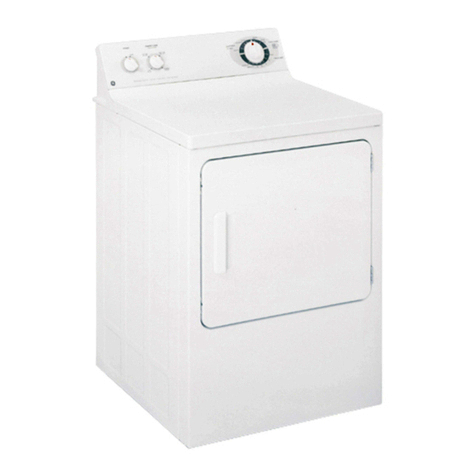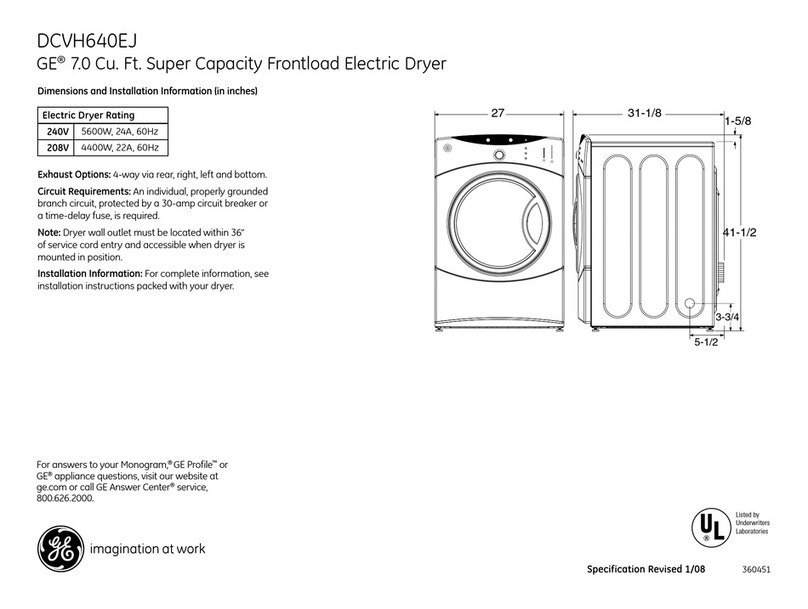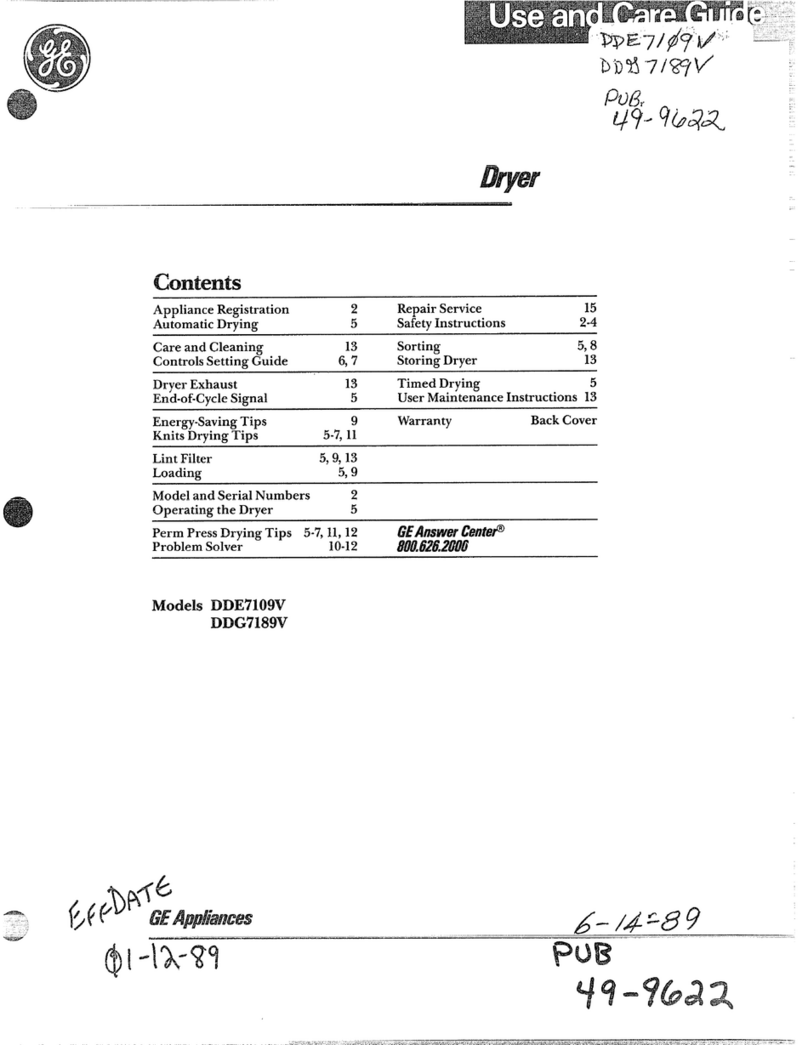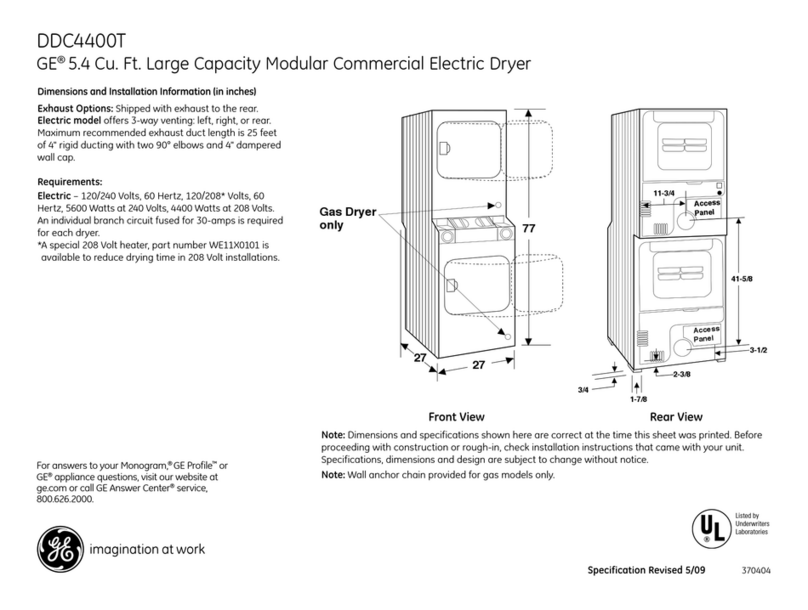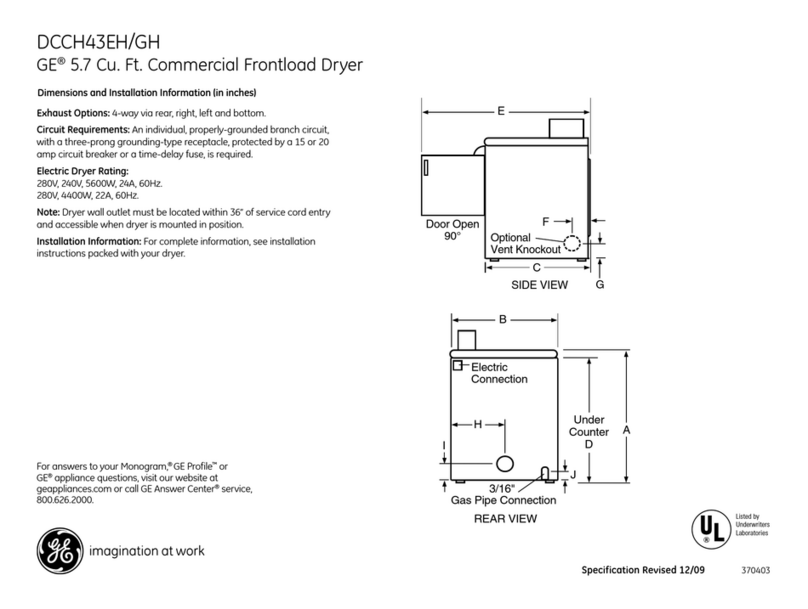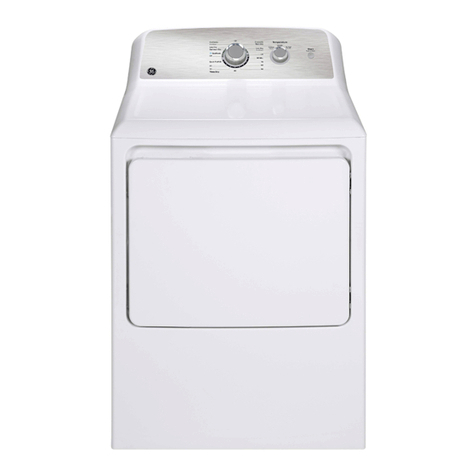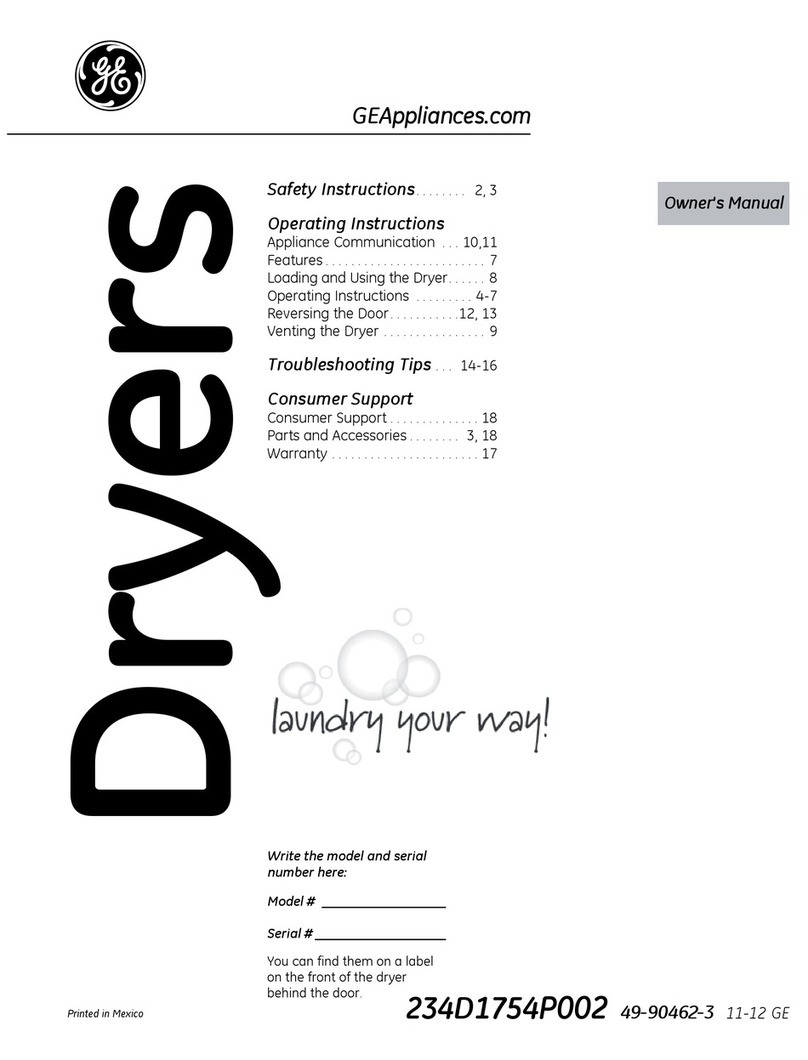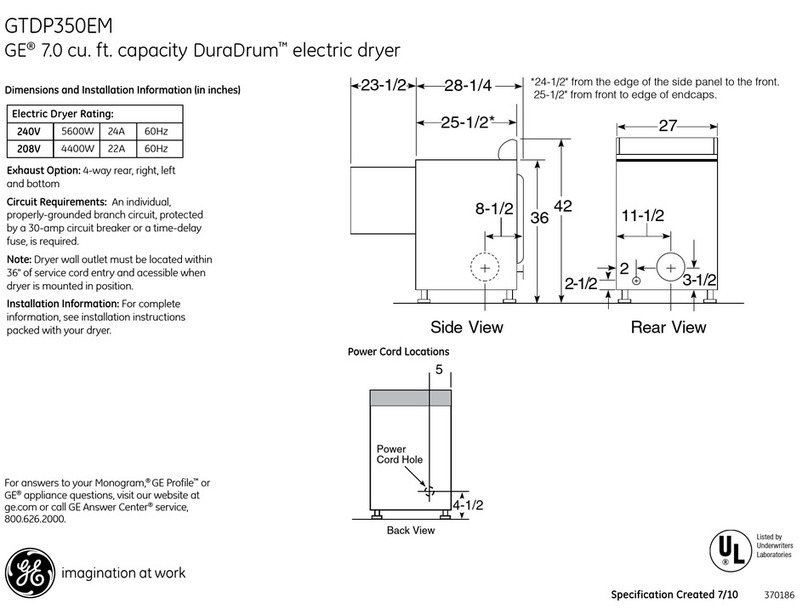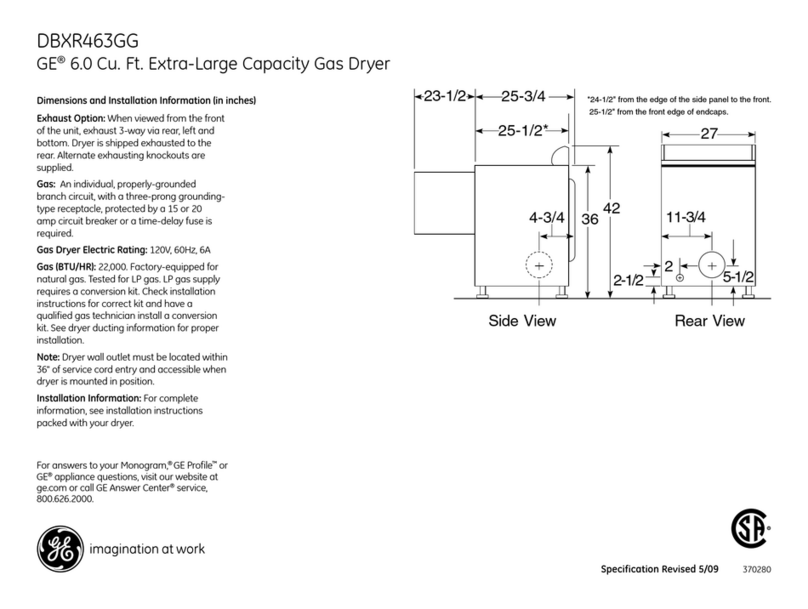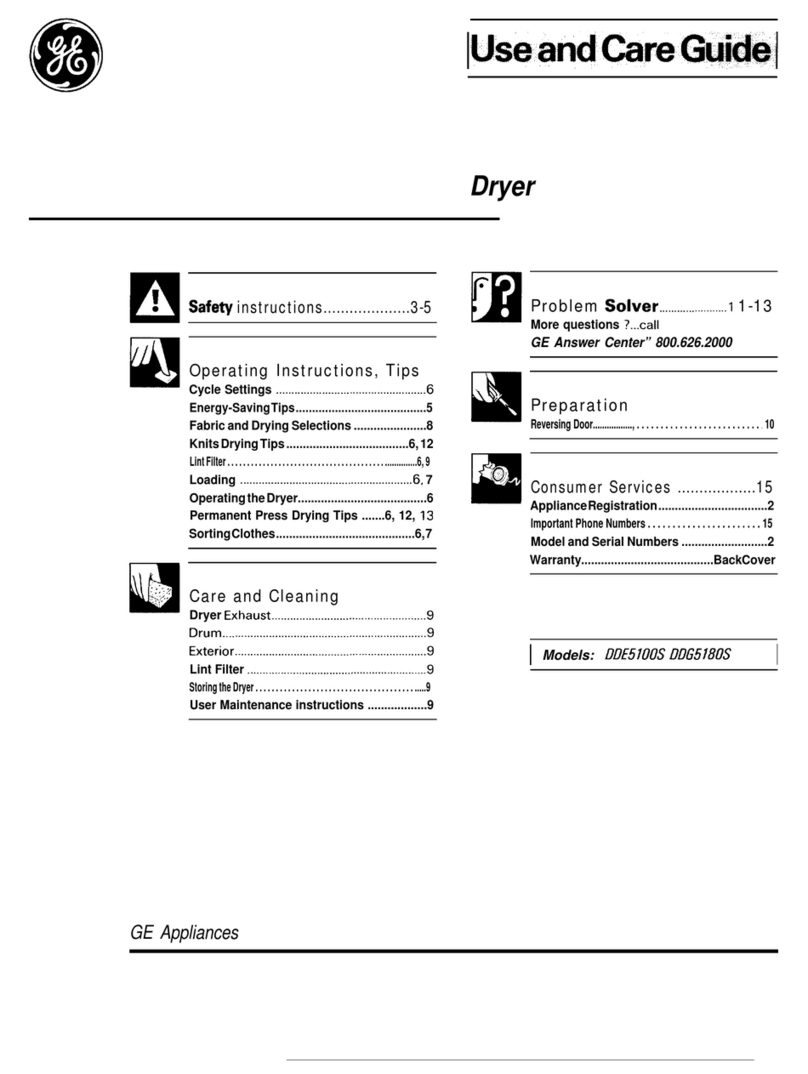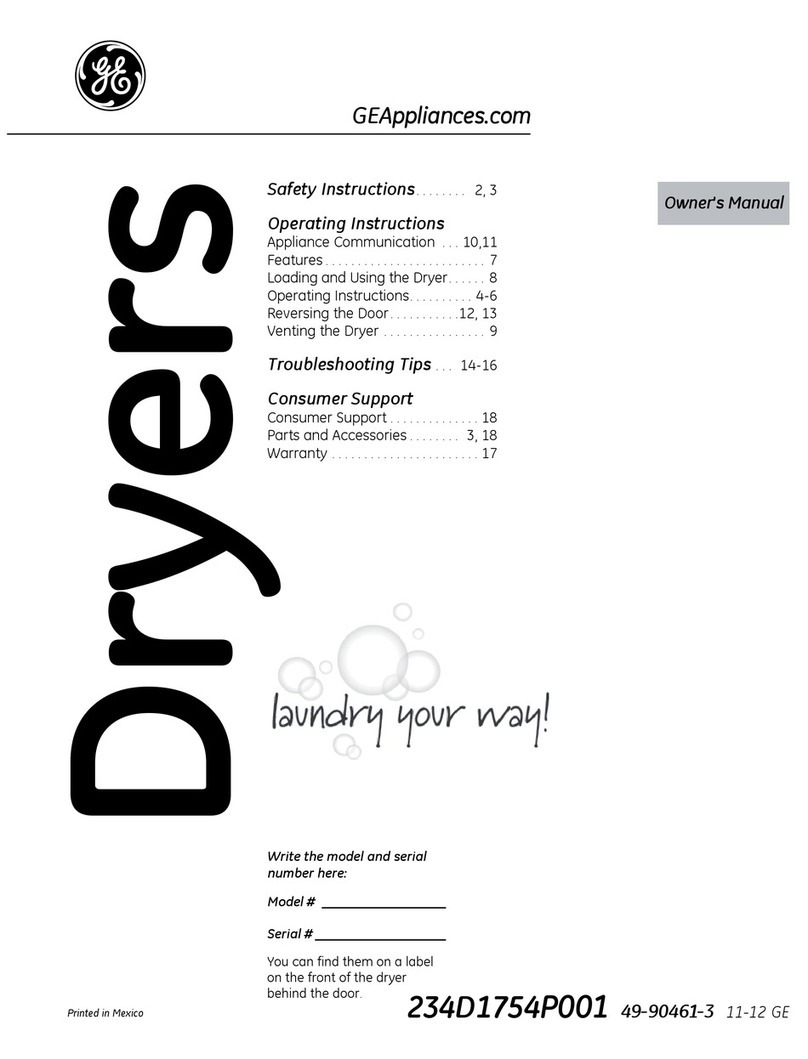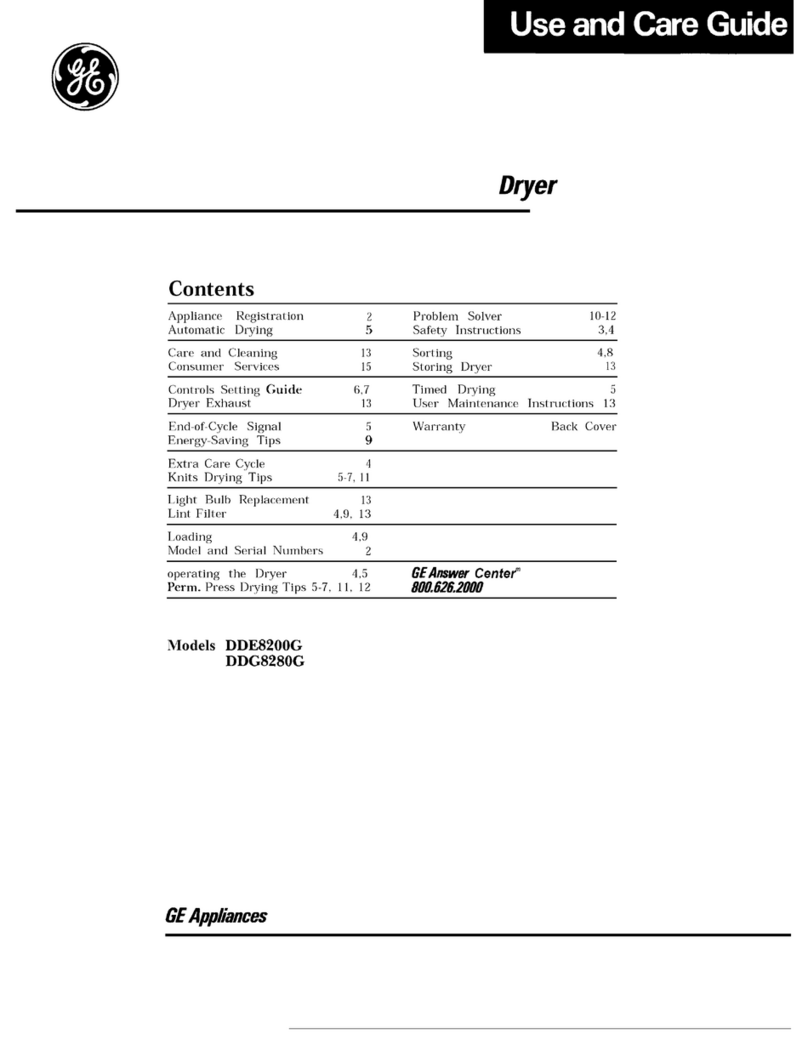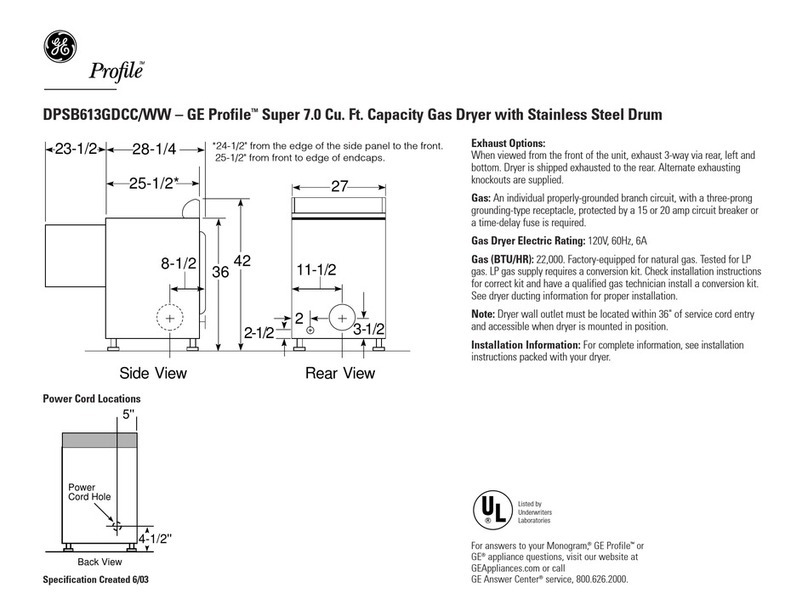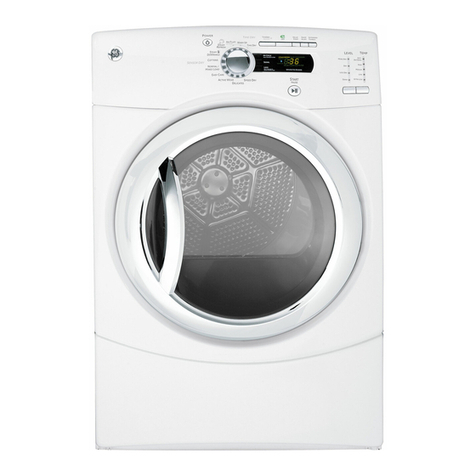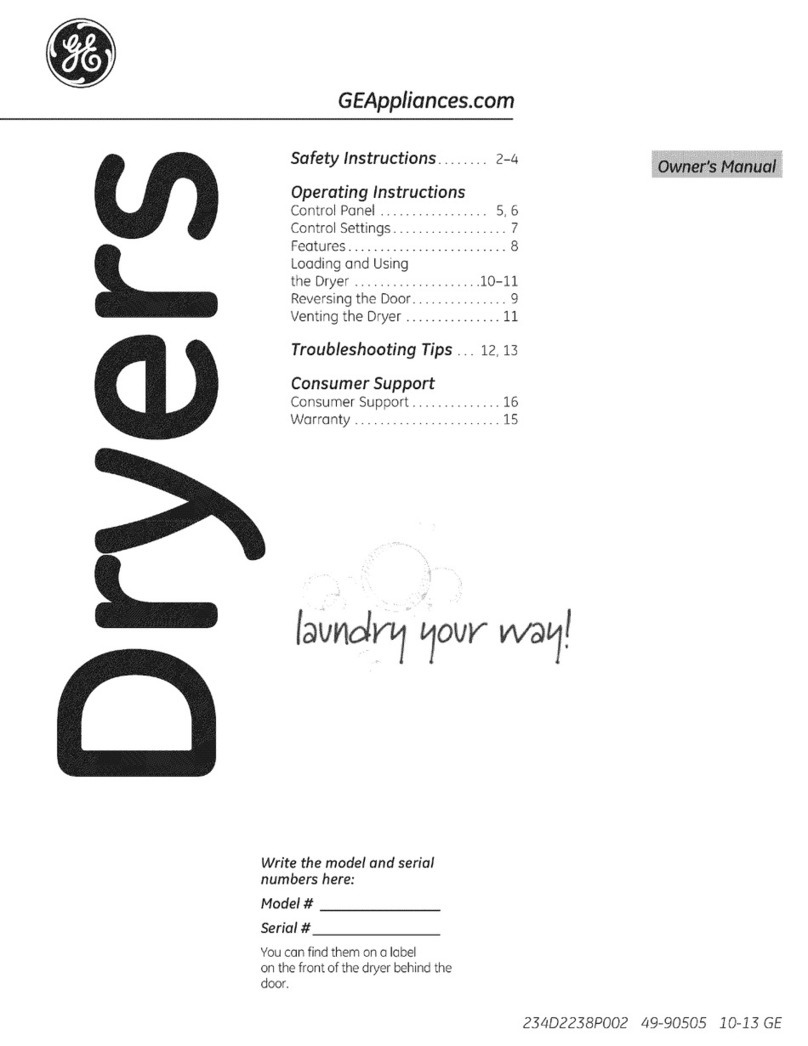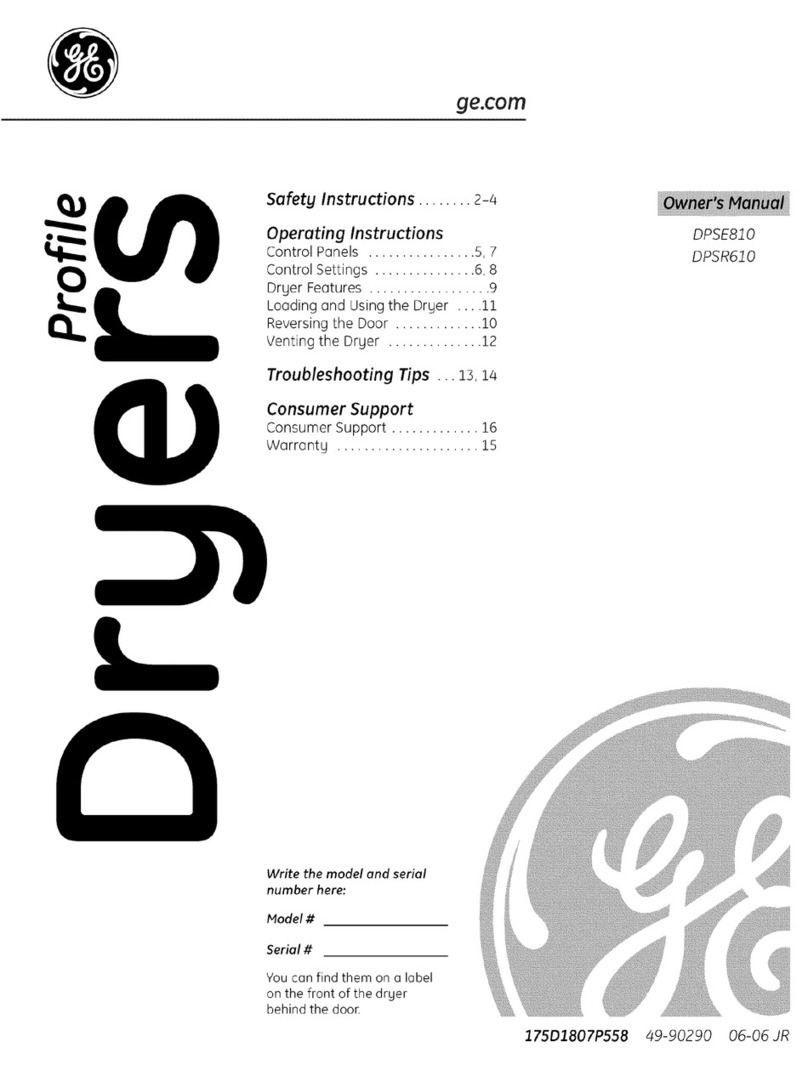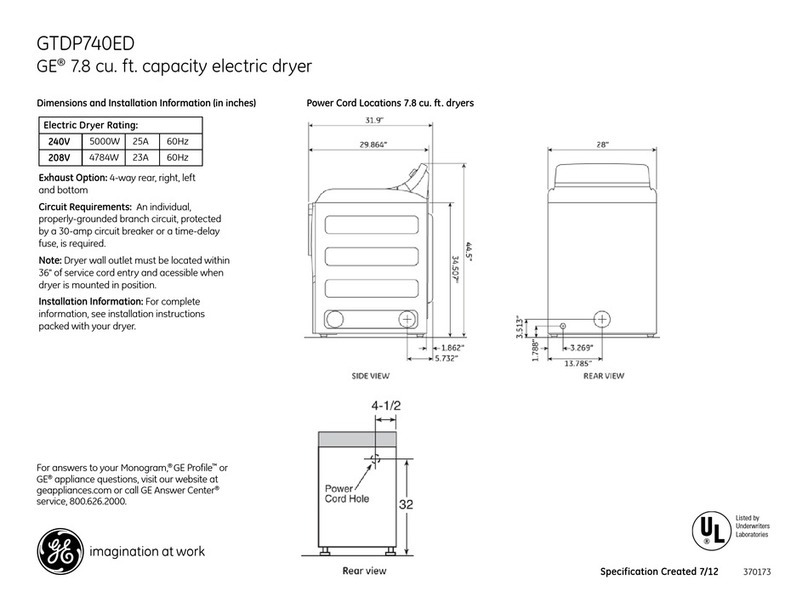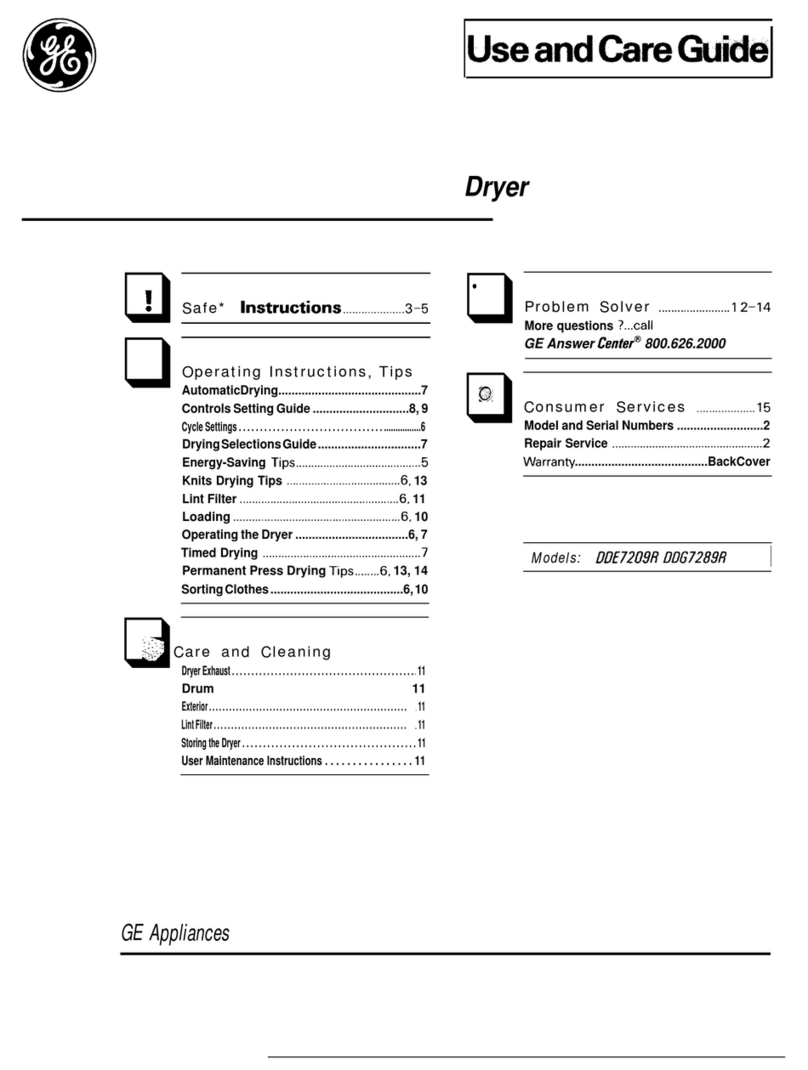—Locatewhere the temperature
is above50”F.(10”C.)for
satisfactory operation of the dryer
control system. Do not install or
storethe dryer where it will be
exposed to theweather.
—Connect to aproperly rated,
protected and sizedpower-supply
circuit toavoidelectrical overload.
—Exhausting tothe outside is
STRONGLY RECOMMENDED
toprevent large amounts of
moisture and lint from being blown
into the room. Carefully followthe
ExhaustingDetailsinthe Installation
Instructions.
.When disconnecting this
appliance pull bythe plug rather
than the cord toavoiddamage to the
cord orjunction ofcord and plug.
Make sure that the cord is located so
that it will not be stepped on,
tripped overor otherwise subjected
todamage or stress.
●Do not repair or replace any
part of the appIiance or attempt
any servicing unless specifically
recommended in this Use and
CareBook or in published user-
repair instructions that you
understand and havethe skills to
carry out.
Tominimize the possibility
of afm hazard.
●~notweh-t to@=y~icl~
containing rubber, pkticy or
similar materials (such as padded
bras, tennis sh~ galoshes, bath
-@ IWgS$b~ ~P$U@p~lC
bags, eta] asthesemateriak may
melt orkm. Nso. some rubber
●DOnot wash or dry articles
that havebeen cleaned in, washed
in, soaked in, orspotted with
combustibleorexplosivesubstances
(such as gasoline, degreasers,
@cleaning solvents,kerosene,etc.)
which may giveoff vapors that
couldigniteor explode.Donot use
or storesuch substances on/or
around your washer and/or dryer
during operation.
●Anyarticle on which you have
used acleaning solvent, or which
contains flammable materials
(such ascleaning cloths, mops,
towelsused inbeauty salons,
restaurants or barbershops, etc.)
must not beplaced in or near the
dryer until all traces ofthese
flammable liquids or solids and
their fumes havebeen removed.
There are manyhighly flammable
items used inhomes such as:
acetone, denatured alcohol,
gasoline, kerosene, some household
cleaners, some spot removers,
turpentines, waxes,wax removers
andproducts containing petroleum
distillates.
●clean the lint filter beforeeach
load toprevent lint accumulation
inside the dryer orin the room.
DO N~ OPERATE THE
DR~R WITHOUT THE LINT
FILTER IN PLACE.
●Keeparea around and
underneath your appliance free
from the accumulation of
combustible materials, such as
iint, paper, rags, chemicals, etc.
.DOnot store items that maybum
or melt (such asclothing, paper
material, plastics or plastic
containers, etc.) ontop ofthe dryer
during operation.
●me in~rior ofthe machine
and the exhaust duct connection
inside the dryershouId be cleaned
periodically bya qualifkd
individud.
●~~t duct {seei-atio~
instructions). Use onIymetal duct
inside dryer or forexhausting
dryerto the outside.
Tominimize the possibility
of injury.
●Neverreach into the dryer while
the drum ismoving. Beforeloading,
unloading or adding clothes, wait
until the drum has completely
stopped.
●Close supervision is necessary
if this appliance is used by or near
children. Do not allow children to
play inside, on or with this
appliance or any discarded
appliance. Dispose of discarded
appliancesand shipping or packing
materials properly. Before
discarding adryer, or removing
from service, remove the door of
the drying compartment.
●Keep all laundry aids (such
as detergents, bleaches, fabric
softeners, etc.) out of the reach of
children, preferably in alocked
cabinet. Observe all warnings on
container labels to avoidpersonal
injury.
●Keep the floor around your
appliances clean and dry to reduce
the possibility of slipping.
●Do not dry fiberglass articles in
your dryer. Skin irritation could
result from the remaining glass
particles that may be picked up
by clothing during subsequent
dryer uses.
●The laundry process can reduce
the flame retardancy of fabrics. To
avoid such aresuIt, the garment
rnanuticturer’s care instructions
should be followed very carefklly.
●Never climb on or stand on the
of electric shock, &ph.tg thik
appliance from the power supply \
before attempting any maintenance
~-orcleaning (except the removal and
:cleaninx of the lint filter). I!J~E:
krnin~theCycle SeIec& knob ‘
to an OFI?position does N~
disconnect the appliance from
the power supply.
F==Ebl
3
.. -, ,






